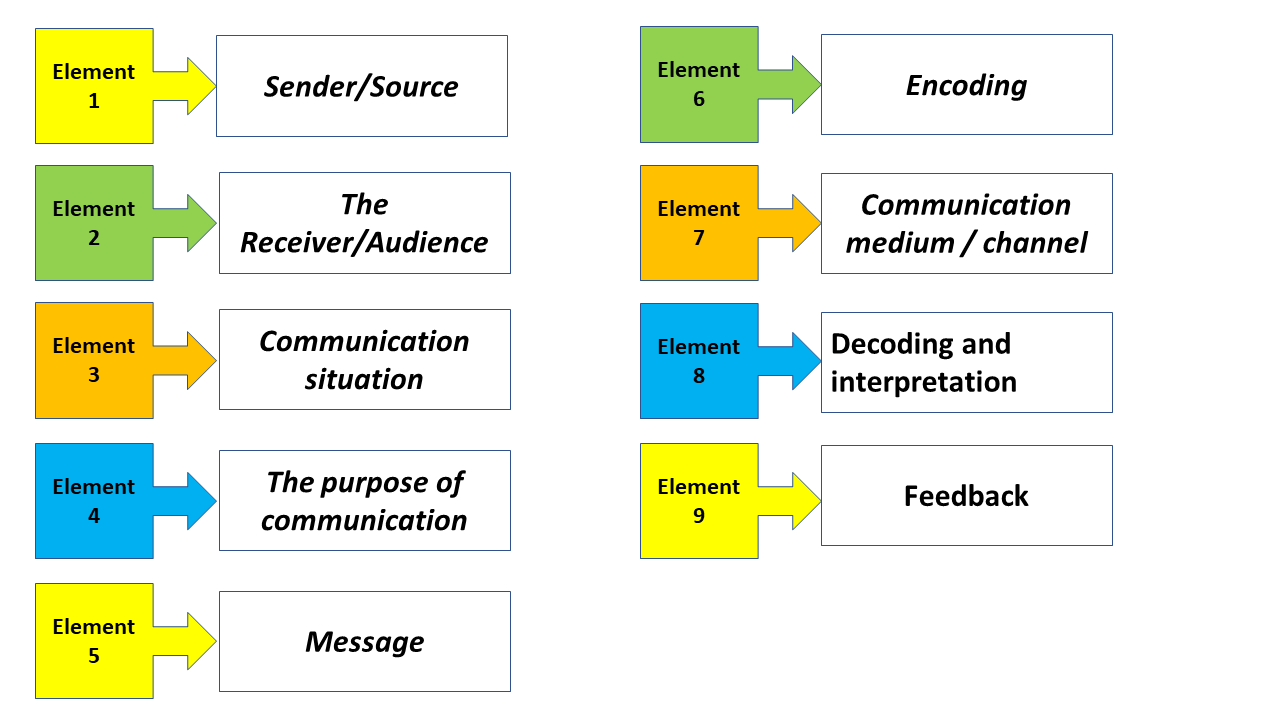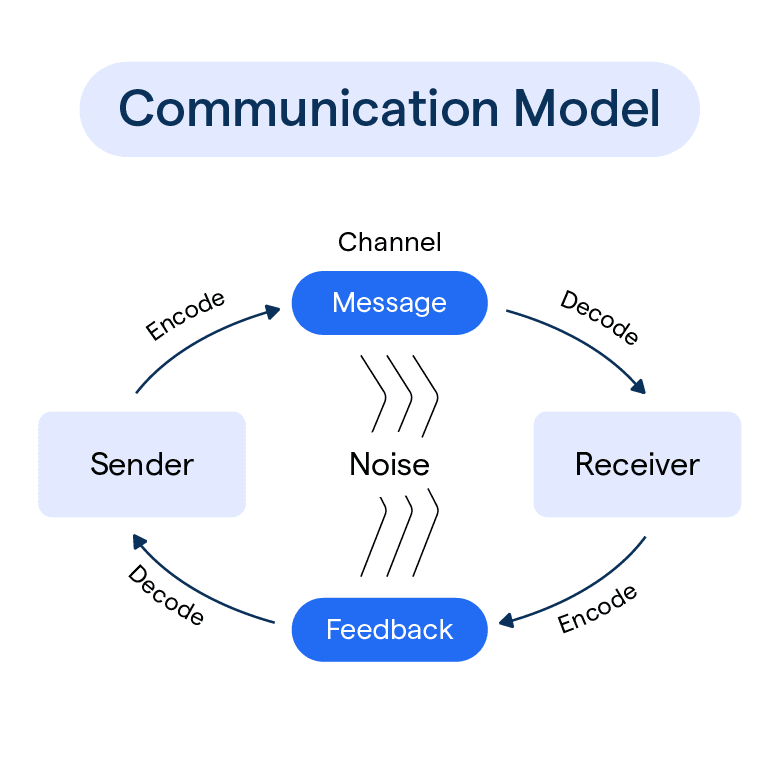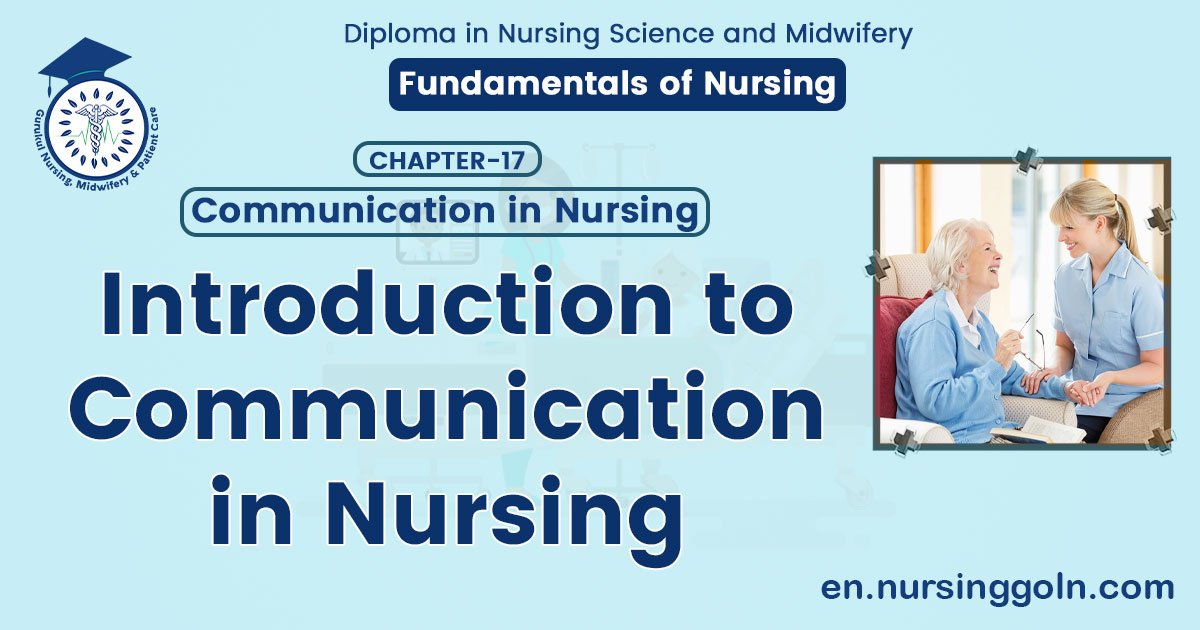Introduction to Communication in Nursing – Nursing is a profession within the healthcare sector focused on the care of individuals, families, and communities so they may attain, maintain, or recover optimal health and quality of life. Nurses may be differentiated from other healthcare providers by their approach to patient care, training, and scope of practice. Nurses practice in many specialisms with differing levels of prescriber authority.
Many nurses provide care within the ordering scope of physicians, and this traditional role has shaped the public image of nurses as care providers. However, nurses are permitted by most jurisdictions to practice independently in a variety of settings depending on training level. In the postwar period, nurse education has undergone a process of diversification towards advanced and specialized credentials, and many of the traditional regulations and provider roles are changing.
Nurses develop a plan of care, working collaboratively with physicians, therapists, the patient, the patient’s family, and other team members, that focus on treating illness to improve quality of life. Nurses may help coordinate the patient care performed by other members of an interdisciplinary healthcare team such as therapists, medical practitioners, and dietitians. Nurses provide care both interdependently, for example, with physicians, and independently as nursing professionals.
Introduction to Communication in Nursing
Communication is a term used to mean transmitting or giving and receiving messages between people. It is the sum total of all behavioral events, both conscious and unconscious that occurs when people come together. Communication is an art as well as a science; helps establish a degree of one-ness and good rapport. The
process of communication is enhanced when these is free, frank and friendly atmosphere. The nurses express their concern for the patients, both througn action and by manner of performing it. Its essentials include:
- Through orientation to physical facuummies, visiting hours, diet, etc, to the patients and their relatives.
- Adequate explanation on various treatments and procedures.
- Good listening and comforting words to anxious patents and their relatives.
- Adequate health education.
Communication in Nursing:
Communication is the process through which the nurse can establish a human to human relationship and fulfill the purpose of nursing. Through effective communication the nurse can help individual and families, to prevent and cope with the experience of illness and suffering and if necessary, assist them in finding meaning in these experiences.
Or,
Communication is the basic element of human interactions that allows people to establish, maintain and improve contacts with others. Nursing is a communicative intervention and is founded on effective communication. Communication is a vital element in Nursing in all areas of activity and in all its interventions such as prevention, treatment, therapy, rehabilitation, education and health promotion.

Definition of Communication:
According to Aristotle
“Communication is a means of persuasion to influence the other so that the desired effect is achieved.’
According to Paul Leagens
Communication is “a process by which two or more people exchange ideas, facts, feelings or impressions in ways that each gains a ‘common understanding’ of meaning, intent and use of a message.”
Or,
“Communication can be regarded as two way process of exchanging or shaping ideas, feelings and information. Broadly it refers to “the countless ways that humans have of keeping in touch with one another”.
Or,
“Communication is the process of transferring information or ideas from one person or group of persons to other person or groups with an attempt to bring them to the point of view”.
Or,
According to Newstrom & Keith Davis
“Communication is the transfer of information form one person to another. It is a way of reaching others by transmitting ideas, feelings, thoughts, facts and values.”
According to Theo Haiman,
“Communication means the process of passing information and understanding from one person to another.”
According to (Haque 95)
“Communication is defined as the process of passing information and understanding form one person to another. It means transmitting and sharing of ideas, opinions, facts and information in a manner that is perceive and understood by the receiver of the communication”
According to Hurber (1996)
“Communication is the art of being able to structure and transmit a message in a way that another can easily understand and accept”.
According to Wilson (1995)
Communication can be defined as “The Process of transmitting messages and interpreting meaning.”
Types of Communication:
There are 7 types of communication. These are-
1. One way communication (Didactic method)
2. Two way communication (Socratic method)
3. Verbal communication
4. Non-verbal communication
5. Formal and informal communication
6. Visual communication
7. Telecommunication
1 . One way communication (Didactic method):
The flow of communication is “one way” form the communicator to the audience
Example:
Lectures, film, printed materials, flip chart, flash card, exhibition, ratio, and poster.
Drawbacks:
- Knowledge is imposed.
- Learning is authoritative
- Little audience participation
- No feedback
- Does not influence human behavior
2. Two way communication (Socratic method):
The Socratic Method is a two way method of communication in which both the communicator and the audience take part. The audience may raise questions, and add their own information, ideas, and opinion of the subjects. The process of learning is active and “democratic” it is more likely to influence behavior than one way communication.
Example:
Interviews, discussions, workshop, panel discussion, demonstrations and contrived situations, role play, seminar.
3. Verbal communication:
The traditional way of communication has been by word of mouth. The advent of written and printed matter is of comparatively recent origin. Direct verbal communication by word of mouth may be loaded with hidden meanings. It is persuasive. No-direct or written communication may not be as positive as the spoken word.
Example:
Written, spoken, Television and radio, movies, magazines, books, computer, posters.
4. Non-verbal communication:
Communication can occur even without words. It includes a whole range of bodily movements, postures, gestures, facial expressions. Silence is not verbal communication. It can speak louder than words.
Example: touch, smile, eye contact, facial expression, straining, body postures. Gestures, physical appearance, voice tune, movement.
5. Formal or informal communication:
Communication has been classified into formal and informal communication. In formal network exist in all organization. The formal channels do not cater to the information needs.
Examples: Gossip circles.
6. Visual communication:
The visual forms communication comprises.
Example: charts and graphs, pictograms, tables, maps, posture
7. Telecommunication:
Telecommunication is the process of communicating over distance using electromagnetic instrument designed for the purposes. Radio, TV and internet etc are mass communication media while telephone, telex and telegraph are known to print system are closer to interpersonal communication with the lunching, a big explosion of electronic communication has taken place of all over the world.
Importance of Communication in Nursing:
Communication is very important in nursing profession including any organization and institutions. Communication plays the vital role in administration and management to success/ achieve goal. so through communication a nurse established a relationship with the patient-
1. It helps the patient/client acquire healthy habits behavior.
2. It is important for the nursing process.
3. It helps the nurse understand her patient and coworker.
4. It gives relaxation and mental satisfaction with his work.
5. It modified her/his behavior and improves nursing skills.
6. Communication fostering the smooth operation of the management.
7. It helps promotion of managerial efficiency.
8. It helps to take quick decision.
9. It helps the patient/client to acquire healthy habits behavior.
10. It is very important to provide basis for leadership action.
11. It helps to develop proper planning of the organization.
12. It plays a vital role for better outcome with minimum cost.
13. It enhances coordination between the nurses and nurse- client nurse doctor or others.
14. It is important for the nurses to help her patient adapt to the changes resulting from
illness.
15. Communication skills provide nurses job satisfaction.
Functions of Communication:
Health communication has to cater to the following needs-
1. Information: The primary function of f health communication is to provide scientific knowledge or information to people about health problems and how to maintain and promote health.
2. Education: Education of the general public is an integral part of a prevention- oriented approach to health and disease problems; and the basis of all education is communication.
3. Motivation: It is the power that drives a person from within to act. One of the goals of health communication is to motivate individuals to translate health information into personal behavior and lifestyle for their own health. Motivation includes the stages of interest, evaluation and decision making.
4. Persuasion: It is the art of winning friends and influencing people. It is an art that does not employ force or deliberate manipulation.
5. Counseling: It is a process that can help people understand better and deal with their problems and communicate better with those with whom they are emotionally involved.
6. Raising morals: It is the capacity of a group of people to pull together persistently or consistently.
7. Health development: communication can play a powerful role in health development by helping diffuse knowledge in respect of the goals of development and preparing the people for the roles expected of them.
8. Organization: communication is the life and blood of an organization.
Communication Process/Key Element of Communication Process:
1. Sender (source)
2. Receiver (audience)
3. Message(content)
4. Channel (medium)
5. Feedback (effect)

1) Sender:
The sender is the originator of the message. To be an effective communicator, he must know
- His objectives, clearly defined.
- His audience, its interests & needs.
- His message
- Channel of communication.
- His professional abilities and limitations.
2) Receiver:
All communications must have an audience; this may be a single or a group of people. They are the consumers of the message.
3) Message:
A message is the information which the communicator transmits to his audience to receive, a sta understand, accept and act upon. It may be in the form of words, pictures or signs. Health communication may fail in many cases, if its message is not adequate. A good message must be-
- In line with the objectives.
- Based on felt needs.
- Meaningful
- Clear and understandable.
- Specific and accurate
- Timely and adequate
- Fitting the audience
- Interesting
- Culturally & socially appropriate
4) Channels of communication:
By channel is implied the “physical bridges” or the media of communication between the sender and receiver. The total communication effort is based on 3 media systems.
a. Interpersonal communication
b. Mass media
c. Traditional or folk media
The choice of the medium is an important factor in the effectiveness of communication.
5) Feedback:
It is the flow of information from the audience to the sender. It is the reaction of the audience to the message. Feedback is generally obtained through opinion polls, attitude survey and interviews.
Modes of Communication:
1. Written communication: Managers are required to do communication amount of written communication and therefore need to able to write clearly.
2. Face to face communication: Manager communicate verbally upward and downward, both 3 formally and informally.
3. Nonverbal communication: It includes facial expression, body movements, is referred to as body language.
4. Verbal communication telephone: Since managers today are quite reliant on the telephone, it has become an important communication tools.
Scope of Communication:
It is the only vehicle for the racing out to close relation with the other words fulfillment of needs. So Immunication inevitably exists in all phases of individual, group or organizational activities, e.g.-
- Throughout life management process.
- Teaching learning process
- Socio-economic development process.
- Organizational administrative and management process.
- Leadership development process and group functioning.
- Health development and patients care process.
Model of Communication:
Basic components of communication process: communication requires 6 basic components/elements
1. A source
2. An encoder
3. A message
4. A channel
5. A decoder and
6. A receiver.
Communication becomes completed when feedback takes place.
Source Encoding Message Channel Decoding→ Receiver — Feedback
1. Source: is the message giver. He is communicator.
2. Encoding: is the process of converting the communicators’ purpose into message by systemic codes.
3. Message: is physical end product and encoding end they encuini liwad 4. Channel: is the vehicle, which carries the message from the source of the receiver.
5. Decoding: is the process of converting the message from its coded stage to the original state of the communications purpose
6. Receiver: is the person or persons to whom the communication transfers his purpose.

Methods of Health Communication:
Medical education and research can be effectively achieved by the implementation of the following process of communications:
A. Individual approach:
➤ Personal contact or interviews.
➤ Home visits
➤ Personal letters
B. Group approach:
➤ Lectures
➤ Demonstrations
➤ Discussion methods
- Group discussion Panel discussion.
- Symposium
- Workshop
- Conferenceslas
- Seminars
- Role play
C. Mass communications:
➤ Television
➤ Radio
➤ Internet
➤ Newspaper
➤ Printed material
➤ Direct mailing, posters billboards.
➤ Health museums and exhibitions and lat of all.
➤ Folk Medias.
Levels of communication:
Ruesch and Bateson (1968) presented a classical model of levels of communication This model consist of:
1. Levels I: Intra-personal communication.
2. Level II: Interpersonal communication.
3. Level III: Group communication.
4. Level IV: Cultural or mass communication.
Levels I: Intrapersonal communication
Intrapersonal Communication is communication within myself. I engage in intrapersonal communication when I thinking, listening, daydreaming, studying, creating, or dreaming. I am both source and destination of this type of communication. I use my brain waves as a channel and the outcomes arc thoughts or ideas, sometimes decisions and sometimes action or behaviors.
Intrapersonal communication takes place whenever we evaluate and react to internal and external stimuli- and involves messages that are sent and received within ourselves. Thus it involves not only our intellect self but also our physical and emotional self, intrapersonal messages reflect your habits, self- concept, self-related roles, and your attitudes, values, and beliefs. This type of communication takes place every moment that we live
Levels II: Interpersonal communications:
This form of communication describes the interactions of two or more people. The most significant setting for interpersonal communication is direct face to face communication between two persons. An interview, a conversation and intimate communications come under this heading. It is more influential than any other type of communication, for it involves the interplay of words and gestures, the warmth of human closeness and in fact all the senses. Feedback is the key word here. Feedback is instantaneous.
Levels III: Group communication:
Group communication shares all these qualities, though in a much less measure. The larger the group the less personal and intimate is the possibility of exchange. In fact, as the group grows in size communication tends to become more and more of monologue, for participation becomes problematic. Group communication requires the following conditions leadership, equal sharing of ideas, peer pressure, roles and norms, and focus on a common goal.
Example:
➤ Lectures.
➤ Demonstration.
➤ Discussion method:
- Group discussion.
- Panel discussion.
- Seminar.
- Role play.
- Symposium.
- Workshop.
- Conferences.

Levels IV: Mass Communication:
When a message needs help to get from its source to its destination, mass communication begins to function. Usually some form of medium- one meaning of which is ‘between’ is needed to connect the sender to receivers. Mass communication powerfully affects our attitudes and beliefs, as well as our perspective on social life.
Today mass communication is a major source of information, companionship. Communication is part of our social self. Because we are using a person-centered, it is important to see how a person’s self is at the heart of all communication interactions.
Example:
- Television.
- Printed material.
- Radio.
- Direct mailing, posters billboards.
- Internet.
- Newspaper
- Folk medias.
Read More…
